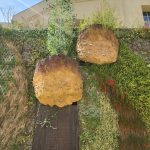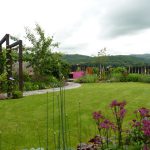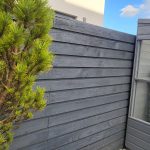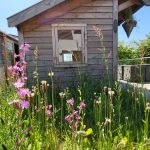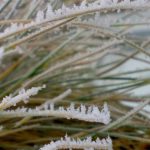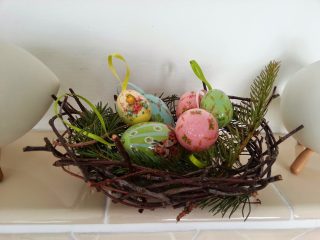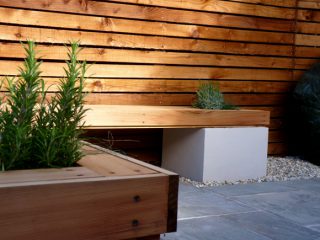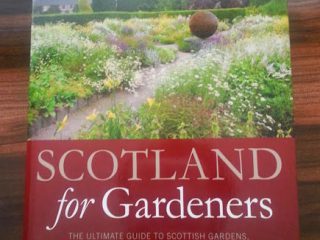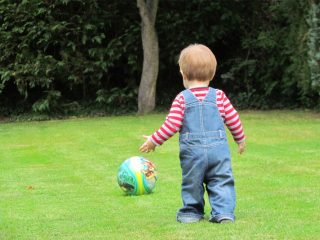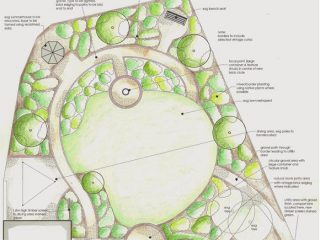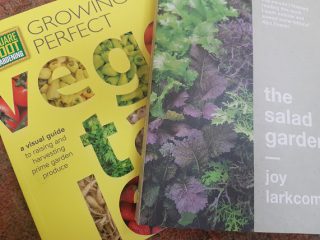Wild at heart
Tuesday, 18 August 2015
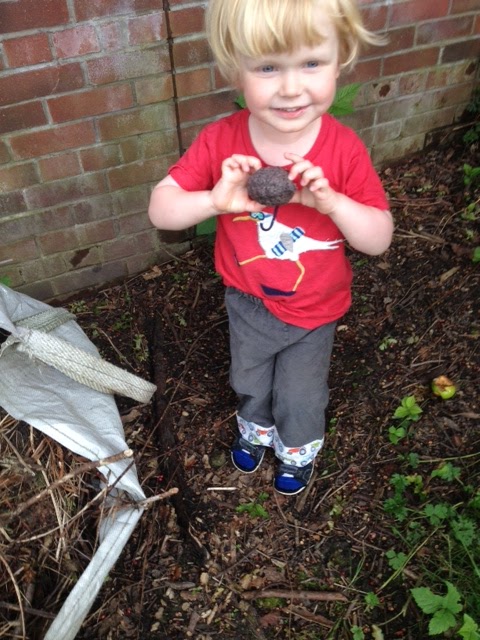
No it’s not poop! Read on to find out what Euan’s holding
The big picture
First of all we should also remember that the wildflowers themselves are part of our country’s heritage. Wildflowers aren’t just picnic sites for bees and butterflies to eat nectar or for birds to eat the seeds. But with plants and wildlife being so closely linked, if we help one, we help the other. As native plants and wild animals have grown up together over thousands and thousands of years they know each other really well and how best to live alongside each other. Some plant-eating insects only eat one type of plant (that’s a very boring diet) and it’s always a native one. The common blue butterfly only lays its eggs upon bird’s-foot trefoil or greater birds-foot trefoil. So if those plants disappear from our countryside the common blue butterfly will starve and become extinct. Have a look at this BBC video that shows brainy folk with more reasons why native wildflowers are the best.
The clever people at Plantlife are trying to encourage mother nature to regenerate her wildflower areas and colonise our countryside with native plants that would have been there in the past. They are trying to protect the pockets of wildflower populations that we still have so that the flowers can naturally spread to neighbouring areas. Plantlife help the flowers to spread by sowing locally collected seeds or spreading local soil that contains seeds. Even animals can help out as seeds can stick to the hairs of cows as they are moved between fields and to horses as they are ridden through the countryside. This sort of spread is what would have happened naturally in the past and the seeds have a greater chance of growing as they are well adapted to local weather and soil. If we can’t use these natural methods of spreading local seeds then it is time to turn to manual sowing of local seeds. But you need to make sure the seeds are from native plants and are suitable for your garden. Scotia Seeds is a reputable source of native wildflower seeds recommended by Plantlife. Remember to never, ever dig up plants from the wild as that is against the law.
What you can do
- Yellow rattle- great in a meadow
- Teasel- perfect in borders
- Red campion- loves woodland edges
- Waxcaps- pretty fungi found in meadows
- Lichens- happily covers walls, trees and rocks
- Daisies- makes for pretty lawns
- Ivy- low maintenance green walls
- Devil’s-bit scabious- loves meadows
- Nettles- some butterflies only lay their eggs on nettles
- Primroses- ants love to munch on their seeds
If you have a dry stane dyke in your garden why not fill a few of the holes with soil, sand or gravel in which wild flowers can grow? Harebells, saxifrages, herb robert and mosses and lichens would all love a home there as they’d think they were in the rocky outcrops they love in the wild.
You could grow meadowsweet in a wildlife pond area. Mummy and Daddy recently blogged how easy it is to make a pond in a small space (even in an old bucket!)
Plants to avoid
Every year us Brits spend 1.7 billion pounds trying to to get rid of invading non-native plants. So make sure not to plant them into your garden in the first place. Here is Plantlife’s list of the worst 12 plants and wildflowers that you can buy and plant, but shouldn’t:
- American Skink cabbage (sounds too smelly anyway!)
- Broad-leaved bamboo
- Chilean giant rhubarb
- Cotoneasters (only 1 type is native the other 70 are invaders)
- Himalayan balsam
- Hottentot fig (fab name for a bully of a plant!)
- Japanese knotweed (strong enough to grow through tarmac & concrete!)
- Pirri-pirri bur
- Rhododendron superponticum
- Spanish bluebell
- Three cornered garlic- smothers primroses and violets not vampires
- Variegated yellow archangel
Lobby your council
You could write to your local MP or council to ask them to plant native wildflowers in unused land such as that along side roads or in roundabouts. It’s becoming more common to see traffic islands that have been sown with wildflowers. This reduces the cost the council of mowing the grass that was there previously and provides a lovely display of the flowers and visiting pollinating insects.
This process is also the idea behind On the Verge, a voluntary community project in Stirling and Clackmannanshire. So far they have established almost 3,000 square metres of wildflowers working with community groups including 25 community councils, 22 schools, 4 housing associations, 3 churches, 2 care homes, 5 Cub Scout and Brownie/Rainbow packs, 5 community garden/allotment groups as well as lots of local gardeners. On the Verge provide the seeds and can also help identify and prepare suitable areas. Their seed is made up of annual and biennial and perennial nectar-rich native Scottish wildflowers. The annuals flower in the first year and then the biennials and perennials provide a lasting wildflower area.
Throw some bombs
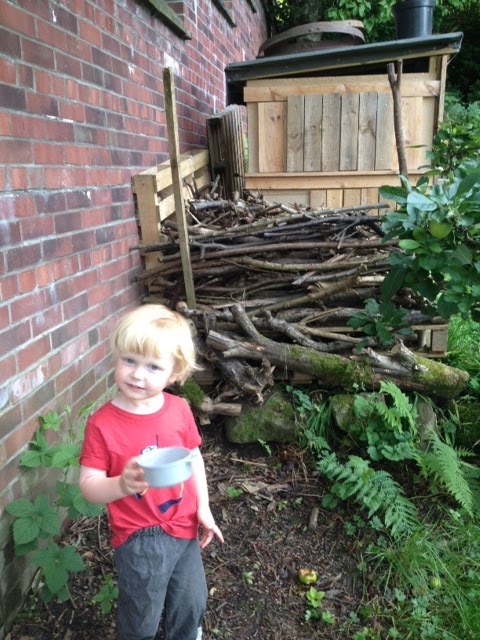
Euan found the perfect location for a spot of seed bombing!
Go enjoy
You can also get outside and see these wildflowers where they grow. There are nearly 50 internationally important sites for wild plants in Scotland known as Important Plant Areas (IPAs). You could look for the native alpine flowers on Ben Lawers and the Breadalbane Mountains above Loch Tay. Or you could explore our Celtic Rainforest (I never knew we had rainforest in Scotland, but I guess it does rain enough!) on the West Coast. But you don’t need to travel far to enjoy native wildflowers, just have a look at the side of the roads near you. More than 550 different wildflowers grow in Scotland’s road verges. Let’s all do a little bit to help our local, native wildflowers.
